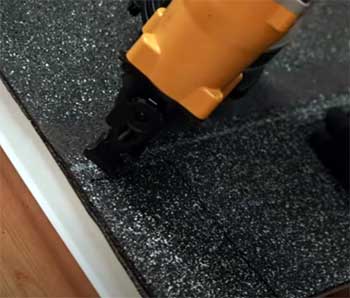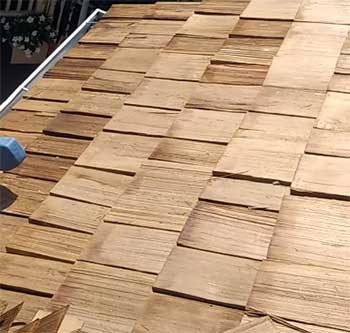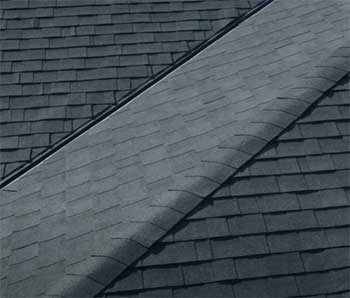When I decided to replace my roof, I found myself torn between cedar shakes and shingles. Both options have their charm, but picking the right one for my home meant weighing aesthetics, durability, cost, and maintenance.
In this article, I’ll share my journey of comparing cedar shakes and shingles, breaking down their pros and cons to help you make an informed choice.
Whether you’re drawn to the rustic appeal of cedar or the sleek reliability of shingles, I’ve got you covered with insights to guide your decision.
A Brief Comparison Table
| Feature | Cedar Shakes | Shingles |
| Material | Natural cedar wood | Asphalt, composite, or fiberglass |
| Aesthetic | Rustic, textured, natural look | Uniform, modern, versatile designs |
| Lifespan | 20–40 years (with maintenance) | 15–30 years (varies by type) |
| Cost | $6–$12 per square foot | $3–$7 per square foot |
| Maintenance | High (regular sealing, cleaning) | Low (minimal upkeep) |
| Durability | Good, but vulnerable to weathering | Excellent, weather-resistant |
| Installation | Labor-intensive, skilled labor required | Quick, straightforward installation |
| Eco-Friendliness | Sustainable, biodegradable | Less eco-friendly, petroleum-based |
| Fire Resistance | Moderate (with treatment) | High (Class A fire-rated options) |
| Insulation | Excellent thermal and sound insulation | Moderate insulation |
My Journey Into Roofing Choices

Standing on my lawn, staring at my aging roof, I knew it was time for a change.
The faded shingles were curling at the edges, and I wanted something that would not only protect my home but also elevate its curb appeal.
That’s when I started exploring cedar shakes and shingles.
Both are popular roofing materials, but they cater to different needs and lifestyles.
I wanted to understand what each offered, how they’d perform in my climate, and whether they’d fit my budget.
Let’s break it down so you can navigate this decision as I did.
What Are Cedar Shakes?

Cedar shakes are hand-split or machine-cut pieces of cedar wood used for roofing or siding.
They’re thick, rugged, and have a distinct, natural grain that gives homes a timeless, rustic vibe.
I was instantly drawn to their texture—each shake has a unique pattern, making my roof feel like a piece of art.
They’re typically made from western red cedar, known for its durability and resistance to rot.
But as I learned, their beauty comes with a commitment to care.
Pros of Cedar Shakes
The first thing that struck me about cedar shakes was their aesthetic appeal. They have a warm, organic look that blends beautifully with nature, perfect for my craftsman-style home. Here’s what I found compelling:
- Stunning Visual Appeal: Cedar shakes offer a textured, handcrafted look that’s hard to replicate. They age gracefully, developing a silvery-gray patina over time, which I found charming.
- Natural Insulation: Cedar is a fantastic insulator. During my research, I discovered that cedar shakes keep homes cooler in summer and warmer in winter, potentially lowering energy bills.
- Eco-Friendly Choice: Cedar is a renewable resource, and shakes are biodegradable. For someone like me, who values sustainability, this was a big plus.
- Long Lifespan with Care: With proper maintenance, cedar shakes can last 20–40 years. In coastal areas with mild climates, they can even outlast some shingles.
- Sound Insulation: I noticed that cedar shakes dampen noise from rain or hail better than shingles, creating a quieter indoor environment.
Cons of Cedar Shakes
But it wasn’t all rosy. As I dug deeper, I realized cedar shakes demand more effort and money to maintain their charm. Here’s what gave me pause:
- High Maintenance: Cedar shakes need regular cleaning, sealing, and treatments to prevent moss, mold, and rot. I wasn’t thrilled about climbing onto my roof every couple of years.
- Costly Upfront: The price tag shocked me—$6–$12 per square foot, including installation, is steeper than shingles. For my 2,000-square-foot roof, that added up fast.
- Fire Risk: Untreated cedar is flammable. While fire-retardant treatments help, they add to the cost and need reapplication over time.
- Weather Vulnerability: In humid or rainy climates, cedar can warp or crack if not properly maintained. I live in a wet region, so this was a concern.
- Installation Challenges: Installing cedar shakes requires skilled labor, which isn’t always easy to find. I worried about delays or shoddy work driving up costs.
What Are Shingles?

Shingles, typically made from asphalt, fiberglass, or composite materials, are the go-to roofing choice for most homeowners. They’re flat, uniform, and come in a variety of colors and styles.
When I first considered shingles, I was impressed by their versatility and affordability. They’re designed to be practical, blending modern technology with ease of use.
Pros of Shingles
Shingles quickly won me over with their practicality. Here’s why they’re a favorite for many homeowners, including me:
- Affordability: At $3–$7 per square foot, shingles are budget-friendly. For my home, this meant significant savings compared to cedar shakes.
- Low Maintenance: Shingles require minimal upkeep—just occasional cleaning to remove debris. I appreciated the idea of a roof I wouldn’t have to babysit.
- Durability: Modern shingles are engineered to withstand harsh weather, from heavy rain to UV rays. Some even come with 50-year warranties.
- Fire Resistance: Many shingles are Class A fire-rated, giving me peace of mind, especially after learning about cedar’s fire risks.
- Easy Installation: Shingles are straightforward to install, which means lower labor costs and faster project timelines.
Cons of Shingles
Shingles aren’t perfect, though. As I weighed my options, I found some drawbacks that made me hesitate:
- Less Aesthetic Appeal: While shingles come in various styles, they lack the natural, textured look of cedar shakes. My home’s character felt slightly diminished with shingles.
- Shorter Lifespan: Most shingles last 15–30 years, which is shorter than well-maintained cedar shakes. I wondered if I’d need to replace them sooner.
- Environmental Impact: Asphalt shingles are petroleum-based and less eco-friendly. They’re not biodegradable, which clashed with my sustainability goals.
- Limited Insulation: Shingles don’t insulate as well as cedar, which could mean higher energy bills in extreme climates.
- Susceptibility to Algae: In humid areas, shingles can develop algae or moss, leading to dark streaks that hurt curb appeal.
Comparing Key Features of Cedar Shakes And Shingles
As I compared cedar shakes and shingles, I focused on the features that mattered most to me: aesthetics, cost, durability, maintenance, and environmental impact. Here’s how they stacked up in my mind.
- Aesthetics

Cedar shakes won hands-down for aesthetics.
Their rugged, natural look gave my home a cozy, cabin-like feel.
Each shake’s unique grain added character that shingles couldn’t match.
Shingles, however, offered more color and style options, from sleek black to vibrant reds.
If you prefer a modern, uniform look, shingles might suit you better.
I leaned toward cedar’s charm but appreciated shingles’ versatility.
- Cost
Cost was a major factor. Cedar shakes were pricier, with materials and installation costing nearly double what shingles would. For a 2,000-square-foot roof, cedar shakes could set me back $12,000–$24,000, while shingles ranged from $6,000–$14,000.
If your budget is tight, shingles are the clear winner. I had to decide if cedar’s beauty was worth the extra expense.
- Durability
Shingles impressed me with their resilience. Designed to handle wind, rain, and UV exposure, high-quality asphalt shingles often come with warranties of 20–50 years. Cedar shakes are durable too, but their longevity depends on maintenance.
In my rainy climate, I worried about cedar warping or cracking without constant care. If you live in a harsh climate, shingles might be the safer bet.
- Maintenance
Maintenance was where shingles really shone. I loved the idea of installing a roof and not worrying about it for years. Cedar shakes, on the other hand, felt like adopting a high-maintenance pet.
Regular sealing, cleaning, and inspections were non-negotiable to prevent rot or moss. If you’re not ready for that commitment, shingles are far easier to live with.
- Environmental Impact
As someone who cares about the planet, cedar shakes appealed to me because they’re natural and biodegradable. Harvested from renewable forests, they have a smaller environmental footprint.
Shingles, made from petroleum-based materials, are less eco-friendly and end up in landfills. However, some manufacturers now offer recyclable shingles, which gave me hope for greener options in the future.
My Decision-Making Process

Choosing between cedar shakes and shingles wasn’t just about specs—it was about aligning the roof with my lifestyle.
I asked myself: Do I want a roof that’s a statement piece or one that’s practical?
How much time and money am I willing to invest in upkeep?
What’s my climate like?
If you’re facing the same decision, think about your priorities. Are you drawn to cedar’s rustic beauty, or do you value shingles’ low-maintenance reliability? Your answers will guide you.
For me, the tipping point was maintenance. I work long hours and didn’t want to spend weekends scrubbing moss off my roof. Shingles offered a set-it-and-forget-it solution that fit my busy life. But I couldn’t shake my love for cedar’s aesthetic.
To compromise, I considered using cedar shakes for a smaller accent area, like a porch roof, while sticking with shingles for the main structure. This hybrid approach let me enjoy cedar’s charm without the full commitment.
Practical Considerations For Your Home
As you weigh your options, consider your home’s specific needs. Climate plays a huge role. In dry, sunny areas, cedar shakes can thrive with less maintenance. In wet or humid regions, shingles’ weather resistance might save you headaches.
Your home’s architecture also matters—cedar shakes suit rustic or traditional styles, while shingles blend well with modern or suburban designs. Budget is another key factor. If you’re stretching to afford cedar, factor in long-term maintenance costs to avoid surprises.
Don’t forget to check local regulations. Some areas have fire codes that require treated cedar or restrict wood roofing altogether. Homeowners’ associations might also dictate material choices.
I called my local building department to confirm what was allowed, and I suggest you do the same.
Frequently Asked Questions (FAQ)
It depends on your priorities. Cedar shakes offer a natural, rustic look and better insulation but require more maintenance. Shingles are affordable, durable, and low-maintenance but less eco-friendly. Choose based on your budget and lifestyle.
The biggest drawback is high maintenance. Cedar shakes need regular cleaning, sealing, and treatments to prevent rot, moss, and fire risks, which can be time-consuming and costly.
With proper maintenance, a cedar shake roof can last 20–40 years. Lifespan varies based on climate and care—mild climates and diligent upkeep can push it toward the higher end.
Wood shakes, like cedar, have high maintenance needs, are prone to weathering in humid climates, have fire risks without treatment, and are more expensive to install than shingles.
Conclusion: Making The Right Choice For You
As I wrapped up my roofing journey, I realized there’s no one-size-fits-all answer. Cedar shakes stole my heart with their rustic charm and eco-friendliness, but shingles won me over with their practicality and affordability.
Your choice depends on what you value most—beauty or ease, sustainability or durability. Take stock of your budget, climate, and willingness to maintain your roof. Whether you go with the timeless allure of cedar shakes or the reliable simplicity of shingles, you’re making a decision that’ll protect and define your home for years.
What’s your pick?
